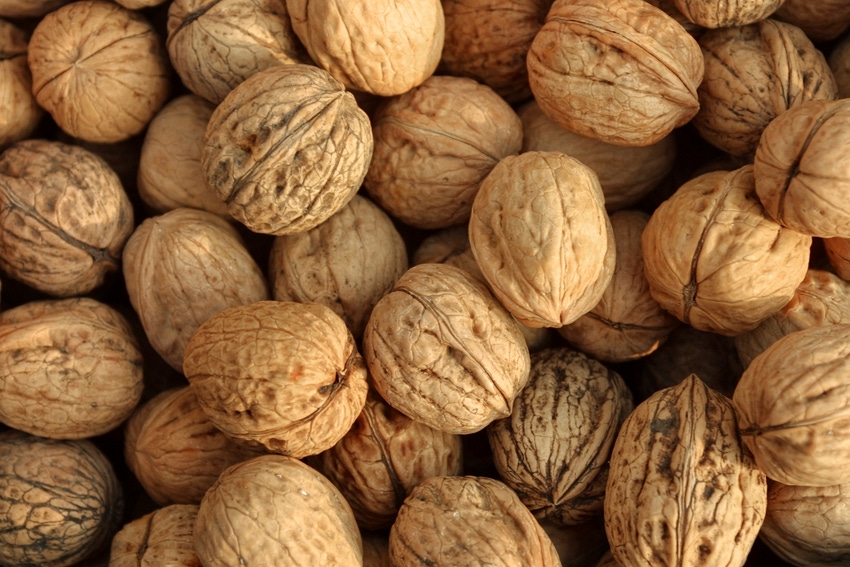
Walnut growers, especially organic producers, have until Dec. 22 to comment on a federal proposal to limit copper applications on the tree nut crop by 25 percent.
The recently extended comment period gives growers extra time to submit comments about the effects of an Environmental Protection Agency (EPA) proposal that would require growers to reduce annual copper applications from 32 pounds per acre to 24 pounds per acre.
Carl Eidsath, technical director for California Walnut Commission, wants growers interested in submitting comments to contact the California Walnut Board for instructions. Contact Eidsath or Abhi Kulkarni at (916) 932-7070 or [email protected] and [email protected].
The reduction in annual copper use by walnut growers leaves few options to effectively control the bacterial disease walnut blight which overwinters in dormant buds.
Rain in the springtime can spread the disease by splashing bacteria onto green tissue. Early-leafing varieties are the most susceptible to walnut blight. Serious outbreaks of blight can cause a 30 percent crop loss if the disease is not controlled, Eidsath said.
Walnut blight control requires the application of copper sprays to early shoots, flowers, and developing nuts. In orchards with a history of walnut blight, growers may need to apply 6-8 protective sprays at 7-10 day intervals timed prior to rain events.
The best choice of a control material for conventional walnut farming systems is a copper tank mixed with Manzate. Growers with organic production, estimated at about 5 percent of total walnut production acres, do not have an alternative for copper sprays for blight control.
The EPA cites environmental concerns as the impetus for the proposal. Agricultural use of copper compounds is minor compared to industrial uses. Agricultural use accounts for about 8.6 million pounds of metallic copper for use as a fungicide and bactericide.
In agriculture, copper is strictly a protectant and works as a contact pesticide. It creates a protective barrier on the surface of plant tissue to prevent spore germination in fungi and membrane destruction and the invasion by bacteria.
Oranges, walnuts, and wine grapes are crops with the highest use of copper sprays, EPA says. The agency reports the highest labeled annual application rates range from 4.92 pounds to 48 pounds per cubic acre for orchard crops, and from 1.06-25 pounds per cubic acre for other agricultural uses.
Copper is primarily applied via ground spray using air blast, ground boom, mechanical duster, hand wand sprayer, push spreader, and automatic metering equipment. Aerial sprays are rarely used.
EPA also says orchard crop use of copper poses greater risks due to higher use rates and the lack of effective options other than copper. Orchard and row crop copper use may cause direct adverse effects to aquatic and terrestrial wildlife, the agency claims.
The risk posed to aquatic animals is considerably higher than for terrestrial animals, as toxicity occurs when Cu+2 binds to gills, whereas acute poisoning of terrestrial organisms requires dietary ingestion of toxic levels of copper, says EPA.
The agency developed its rate reduction proposal based on copper usage data from private pesticide market research, California Department of Pesticide Regulation reporting, and USDA-NASS chemical use surveys. EPA characterizes its proposed reductions as reasonable and not likely to cause a significant impact on agriculture.
Eidsath said copper product labels would reflect the rate changes which may not be obvious to growers. Growers can still make up to six applications per year, but at the maximum single application rate of four pounds per acre.
This copper rate reduction also poses a serious problem in resistance management, said Eidsath. Due to the development of copper-resistant pathogen populations, the management of walnut blight is dependent on applications with higher rates of copper, the addition of other bactericidal compounds to copper treatments (e.g., Kocide-Manex), or on new bactericidal treatments with different modes of action.
Lower rates can speed the development of resistance.
About the Author(s)
You May Also Like




